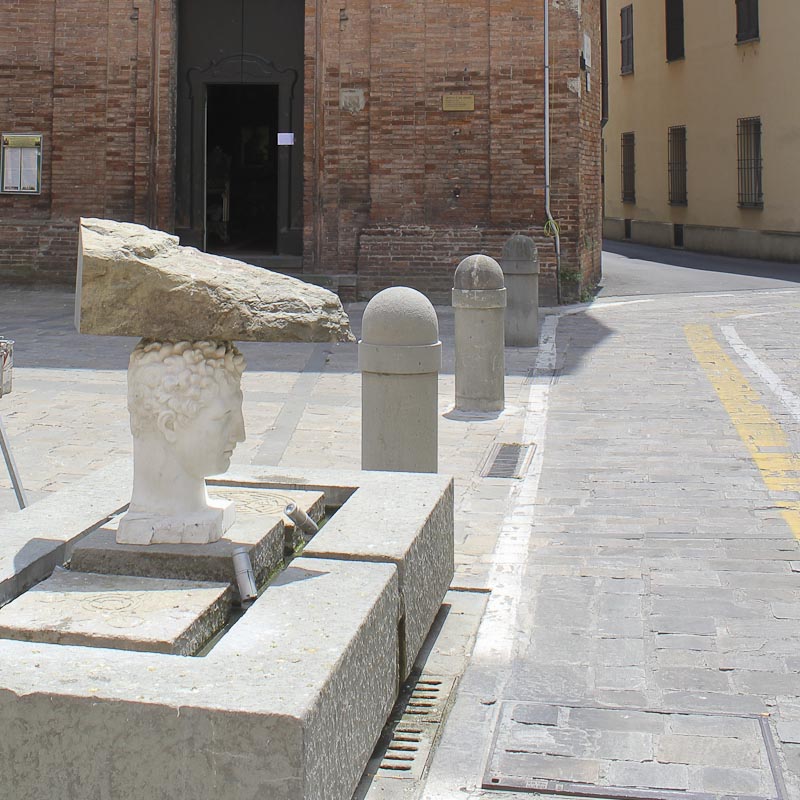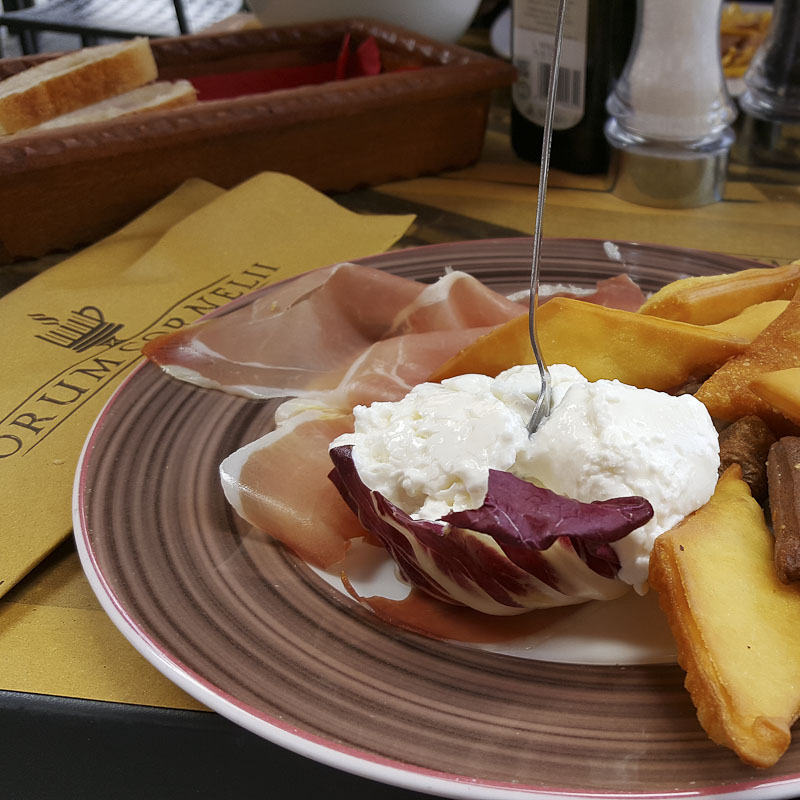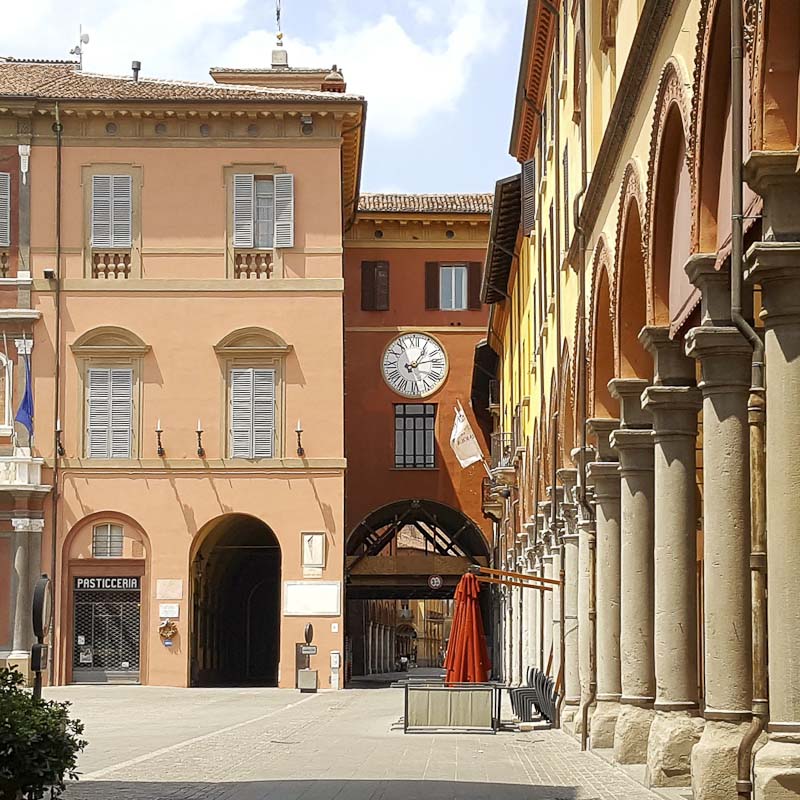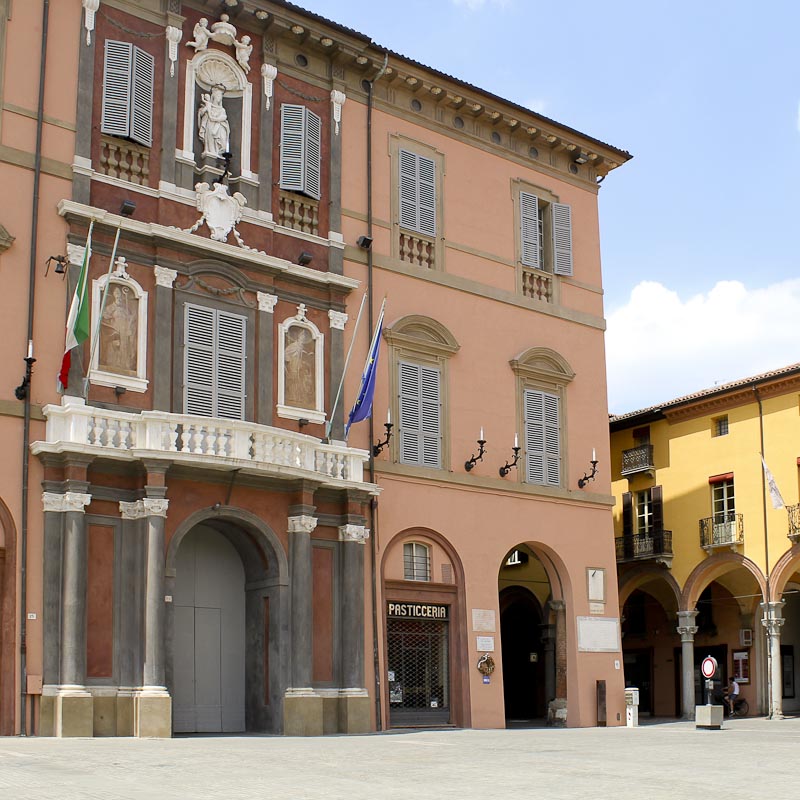Exploring Imola:
More Than Just Fast Cars and the Racing Track
When people think of Imola, their minds often jump straight to the roar of engines at the Autodromo Enzo e Dino Ferrari. But this charming town in Emilia-Romagna has so much more to offer than just Formula One.
We parked near the remnants of Imola’s medieval walls at Porta Montanara and walked down Via Emilia. It is known as one of Italy’s oldest and most historically significant roads which has connected the major cities in the region since roman times. These days it is a medley of different architectural eras with distinct facades, reflecting Imola’s evolution over centuries.
The Relics of a Teacher
Along the way we passed the San Cassiano Cathedral, or Duomo di San Cassiano Martire. A stunning blend of Romanesque and Baroque architecture. The cathedral dates back to the 12th century, although it was extensively remodeled in the 18th century, giving it the ornate Baroque interior you see today.
Stepping inside, we found magnificent frescoes, intricately carved wooden choir stalls, and the Crypt of San Cassiano, Imola’s patron saint. According to legend, San Cassiano was a teacher martyred by his own students. His relics are housed in the crypt beneath the cathedral’s altar, a serene space for quiet reflection.
Other treasures include 16th-century paintings and delicate sculptures that show off the local craftsmanship of Imola’s past.
Outside the San Cassiano there is an intriguing sculpture, known as “Il Peso del Tempo” (The Weight of Time). It was created by the contemporary artist Pietro Cascella. The sculpture features a large stone head with a heavy stone block delicately balanced on top, evoking the tension between endurance and burden.
The artwork is said to reflect the weight of history and human knowledge. How we carry the past with us but strive to balance it with the present and future. Positioned in front of the church, it serves as a reminder of the long history of Imola, blending past spirituality with modern artistic expression. Locals sometimes joke that the sculpture mirrors how life can feel: a constant balancing act between the challenges we face and the wisdom we gather over time.
A Taste of Local Life
Further on we walked into the central town square. Piazza Matteotti is vibrant with Renaissance architecture. Most notably the 13th century Palazzo Comunale (Town Hall); Palazzo Sersanti with the beautiful interior courtyard and the Collegio dei Gesuiti, which now houses the public library.
In a corner by the clock tower there are plaques commemorating Giacomo Matteotti, the Italian socialist politician who famously opposed Mussolini’s fascist regime. He was assassinated in 1924, and his death became a symbol of the struggle for freedom in Italy. There are also plaques for the fallen heroes of World War II. And Pope Pius VII, who was imprisoned by Napoleon and passed through Imola after his release. Pius VII was originally from nearby Cesena, and he had significant ties to the region.
It was almost noon on a hot summers day, so the normally bustling square was closing down. Nevertheless it was still possible to enjoy a quick lunch at an outdoor café under the arcades.
Every Wednesday and Saturday morning, the square fills with stalls selling everything from fresh fruit and vegetables to handmade cheeses and olive oil. The smell of freshly baked bread and the sight of vibrant produce will tempt you to stop and sample some of the local flavors.
Missing out on the Museums
I’d have loved to visit Palazzo Tozzoni for a glimpse into the aristocratic life of Imola, but the museums were closed for the long midday break. Palazzo Tozzoni is a noble residence and it promises an authentic snapshot of noble life in Italy from the 18th to the 20th century with beautifully furnished rooms, original furniture, frescoes, and decorations that tell the story of the family’s rise to prominence. The palace also has a lovely garden, perfect for a peaceful afternoon stroll.
Another quirky museum is Museo di San Domenico in a former Dominican convent. This exhibition showcases a variety of historical artifacts, from Roman pottery to Renaissance art.
And, of course, for car enthusiasts there is Museo Checco Costa, located near the Autodromo. Unfortunately, this museum does not host permanent collections and it is only open when temporary exhibitions are set up.
A Fortress with a Storied Past
Still, the most impressive landmark is Imola’s medieval fortress, the Rocca Sforzesca. Built in the 14th century, this imposing structure has seen its fair share of intrigue, betrayal, and power struggles. The castle was originally constructed by the Alidosi family. It was later transformed by the powerful Sforza dynasty into a military stronghold. You can almost hear the echoes of swords clashing when you walk through its massive stone corridors.
One of the fortress’s most colorful figures was Caterina Sforza, also known as the “Tiger of Romagna.” When her husband was murdered, Caterina took charge of the fortress and famously defended it against invaders. Legend has it that she stood atop the fortress walls, defiantly lifting her skirts to taunt the enemy, saying, “Do what you will, but I can always make more children!” Her boldness and wit are still remembered today as a symbol of Imola’s fiery spirit.
Take a leisurely stroll through the Rocca Sforzesca’s towers and ramparts, where you can admire medieval armor, ancient cannons, and breathtaking views of the surrounding countryside. If you’re lucky, you might even catch one of the historical reenactments that bring this fortress’s past to life.
Final Thoughts: Imola’s Hidden Charms
Imola might be best known for its racing heritage, but there’s so much more to explore in this charming town. Whether you’re wandering through medieval fortresses, visiting noble palaces, or soaking up the lively atmosphere of the market square, Imola offers a blend of history, culture, and delightful anecdotes at every corner. So next time you find yourself in Emilia-Romagna, take a detour off the racetrack and discover the quieter, yet equally fascinating, side of Imola.








Leave a Reply
Want to join the discussion?Feel free to contribute!